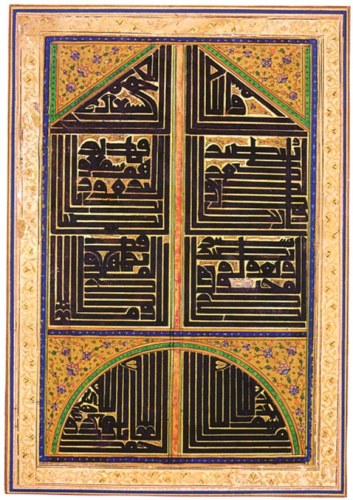

A talisman to ward off evil, probably 1700's-1800's
Source:
http://islamicart.com//main/calligraphy/catalog/india.html
(downloaded April 2000)
"Probably India, 18th-19th century. Ink and gouache on paper stuck on cardboard, 10 x 6 1/4 in. Riyadh, Rifaat Sheikh El-Ard collection. Sotheby's (1980 b), lot 181, p. 86.
This talisman written in heavily stylized Kufic script makes a particularly striking and powerful impression. Similar to a mihrab in shape, it is made up of three separate parts. At the top and bottom are triangular and semi-circular panels bearing standard formulae used amongst other things for warding off evil. The four central panels contain the Surah LXVIII, Al-Qalam, The Pen, verses 51- 52:
"And
the unbelievers
Would
almost trip thee up
With
their eyes when they hear the Message; and they
Say:
Surely he is possessed
But
it is nothing less
Than
a Message
To
all the worlds."
Although these verses were not often used as a talisman, their references to the eyes of evil men, madness and possession, would seem to render them appropriate. The one the unbelievers describe as being "mad" and "possessed" is Muhammad himself. The "Message" he was bringing was of course the Qur'an, the antithesis of madness and regarded by Muslims as the cure for all evil. This probably explains the choice of these two verses as a talisman. At least two other versions of this composition are known, but this is the only one to have floral decoration. Like many talismans, this one was probably intended to prevent or even cure a specific evil, though it is not clear which one."

A Persian manuscript on talismans, North India, 1700's
Source:
http://www.christies.com/LotFinder/search/LotDetail.asp?sid=&intObjectID=4692190&SE=CMWCAT03+14494+215580984+&QR=M+1+86+Aqc0000900+12434++Aqc0000900+&entry=india&SU=1&RQ=True&AN=87
(downloaded Mar. 2006)
"A LEAF FROM A MANUSCRIPT ON TALISMANS, NORTH INDIA, 18TH CENTURY. From an Arabic [actually Persian with some Arabic phrases] manuscript of a magical or talismanic nature, with a miniature of two scorpions in gouache with lines of black nasta'liq above and below- folio 12¾ x 8in. (32.3 x 20.3cm.)."
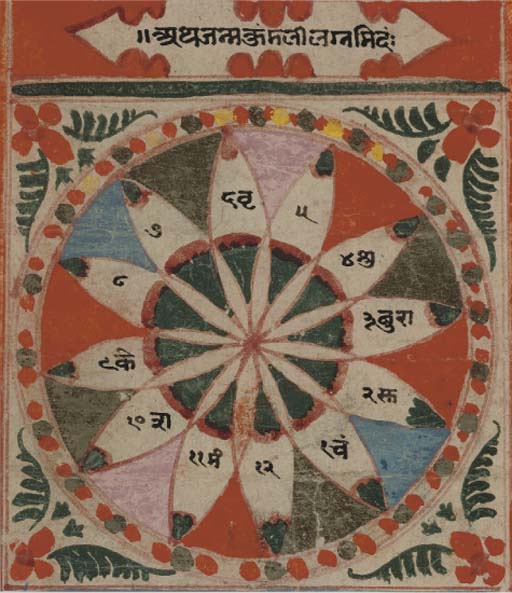
A leaf from a manuscript that probably dealt with talismans, 1800's
Source:
http://www.christies.com/LotFinder/search/LotDetail.asp?sid=&intObjectID=4692259&SE=CMWCAT04+19719+%2D1963285561+&QR=M+1+31+Aqc0000900+16858++Aqc0000900+&entry=india&SU=1&RQ=True&AN=32
(downloaded Mar. 2006)
"LEAF FROM A MANUSCRIPT ON TALISMANS (?), INDIA, 19TH CENTURY. Gouache on paper, with a geometric design filled with inscriptions, mounted, framed and glazed- 6 x 5¼in. (15.5 x 13.2cm.)."
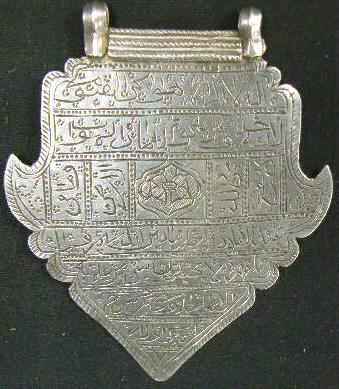 |
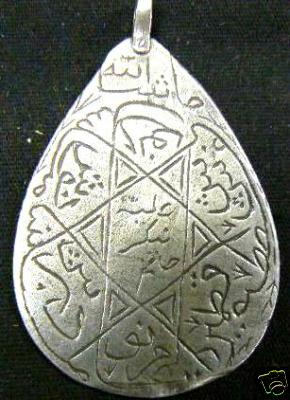 |
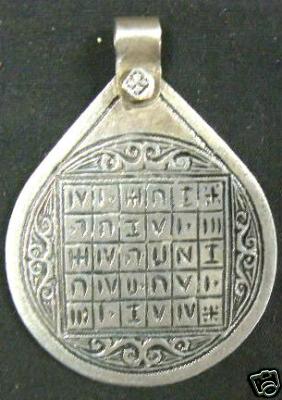 |
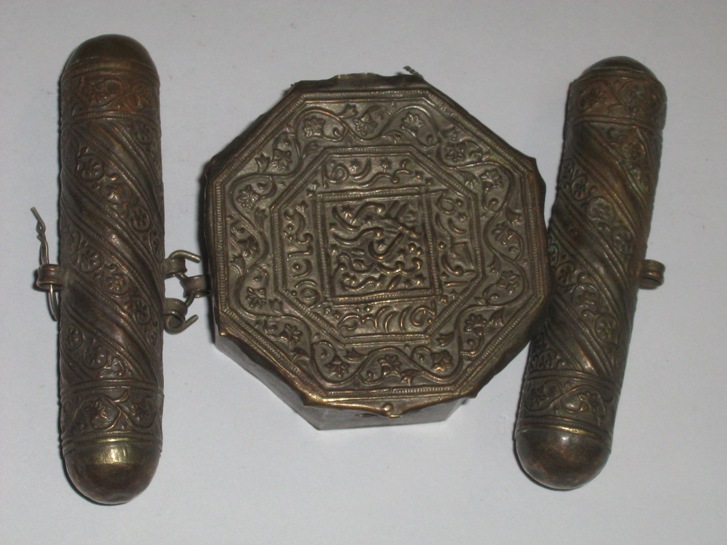
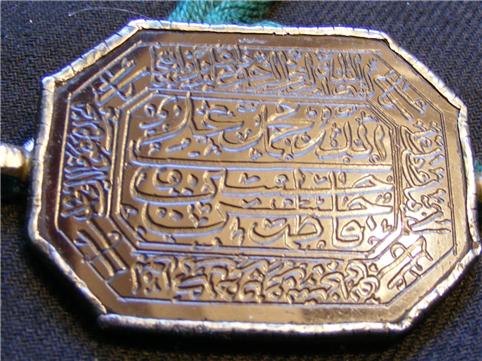 |
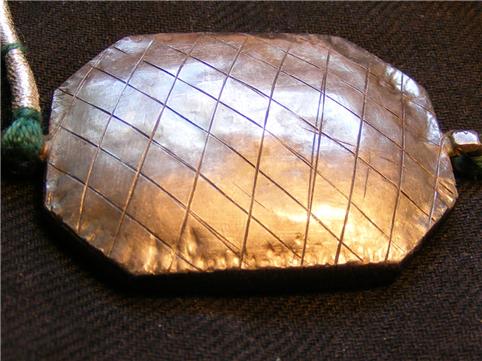 |

A silver-mixed metal amulet case, 4 cm. long, from Afghanistan, c.1800's
Source: ebay, Apr. 2008
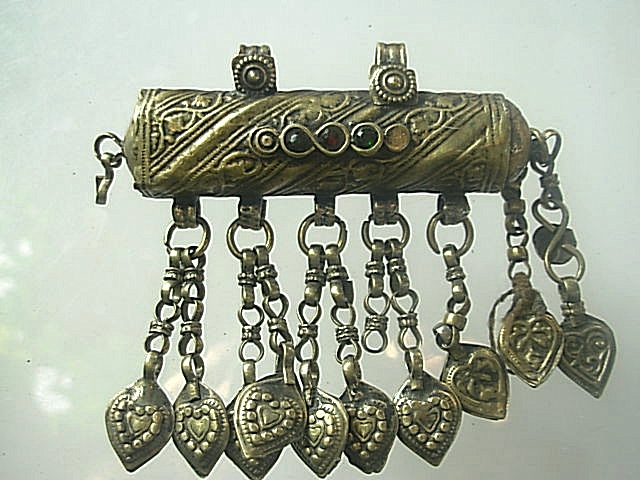
A Persian amulet case, c.1800's, made of bronze and glass beads
Source: ebay, May 2008
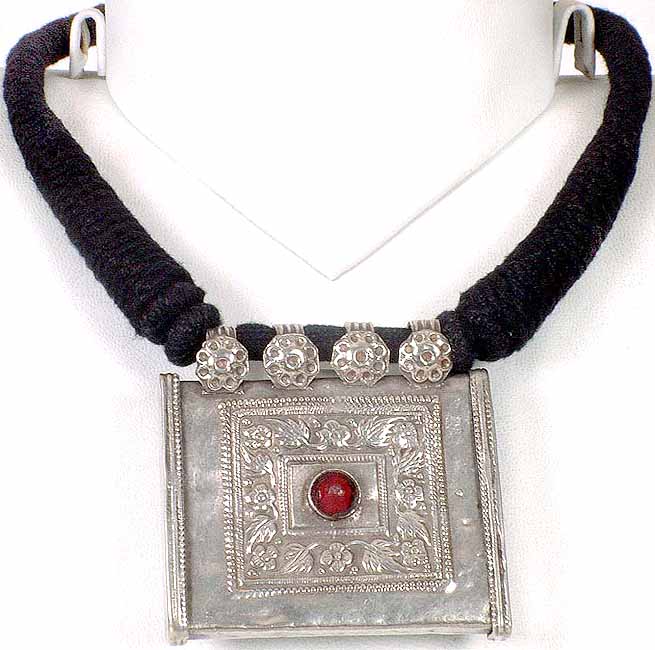
A modern Ratangarhi-style necklace with a silver amulet-case; it would contain some protective verse or charm
Source: http://www.exoticindiaart.com/product/LA59/
(downloaded Apr. 2008)
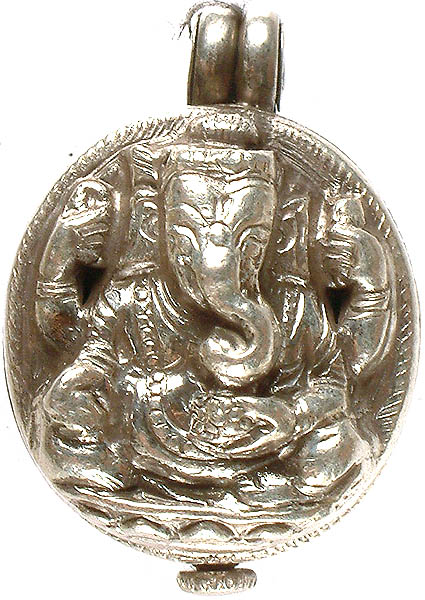
A modern silver amulet case decorated with an image of Ganesh
Source: http://www.exoticindiaart.com/product/JPU75/
(downloaded Apr. 2008)
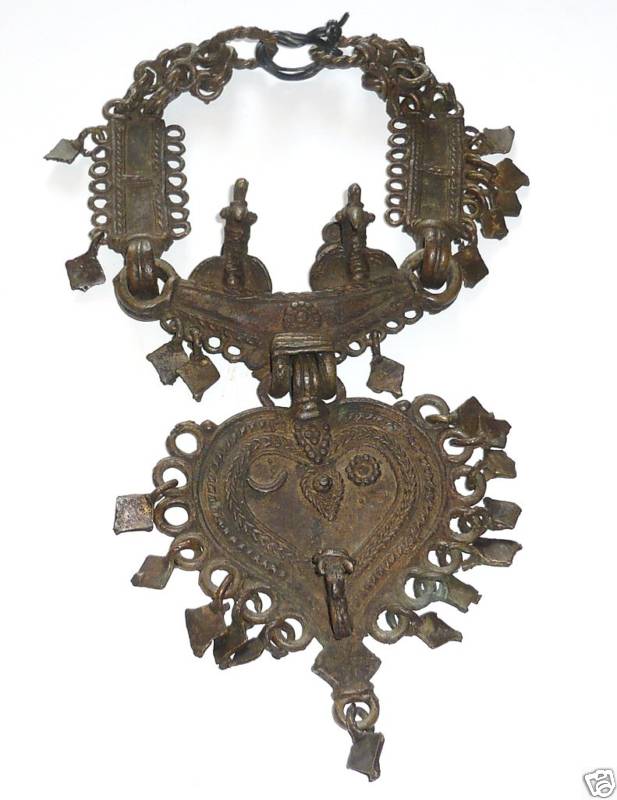
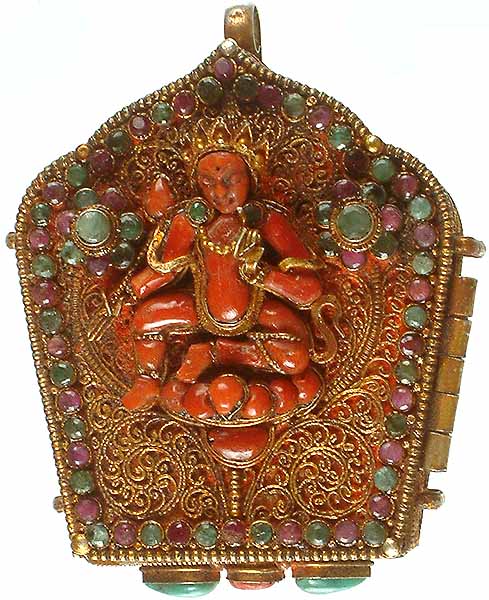
== Indian Routes index == Indian Routes sitemap == Glossary == FWP's main page ==